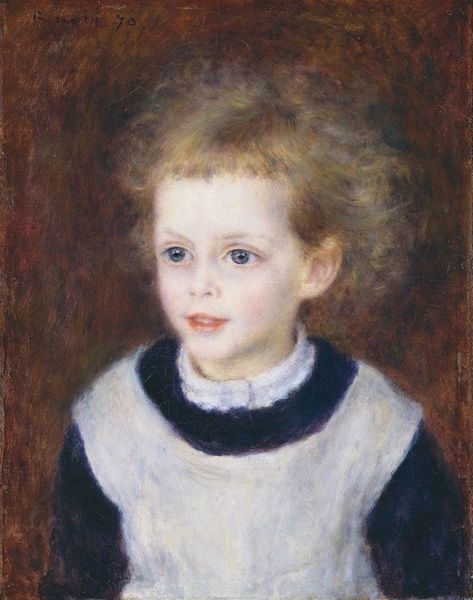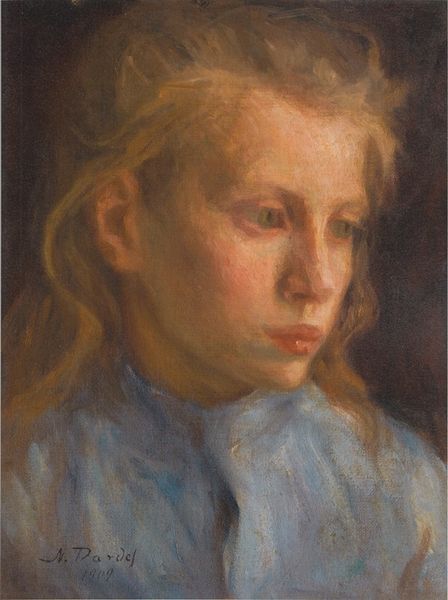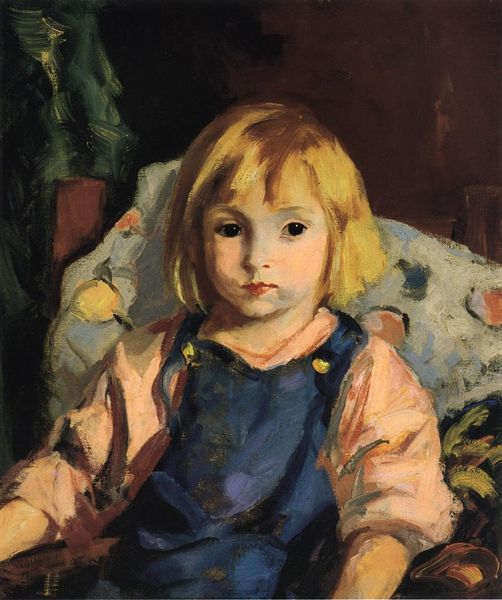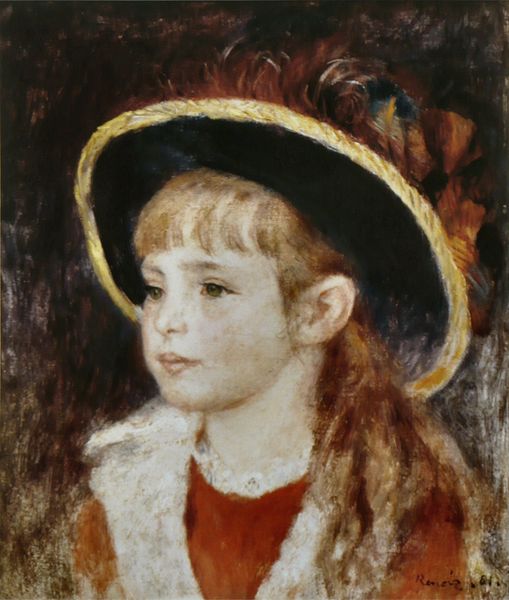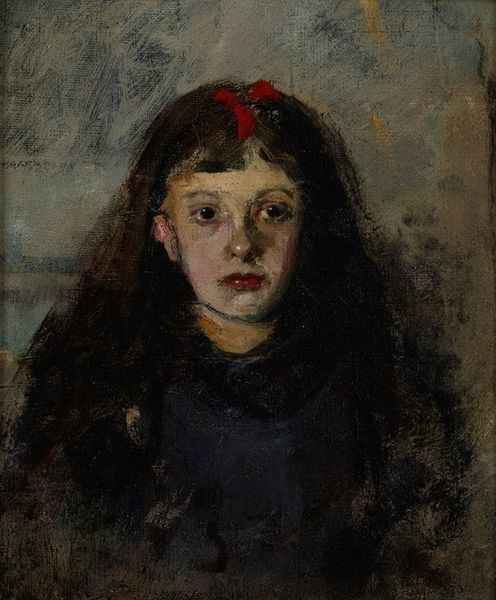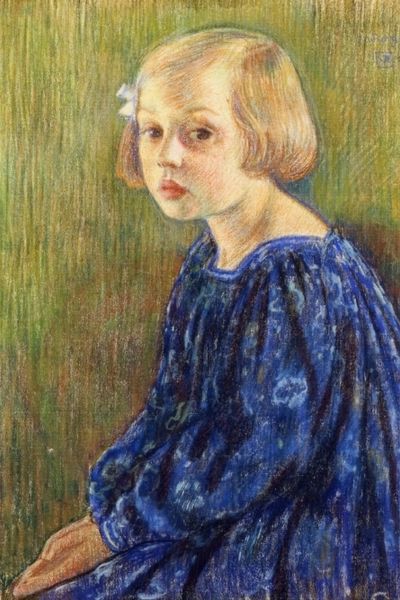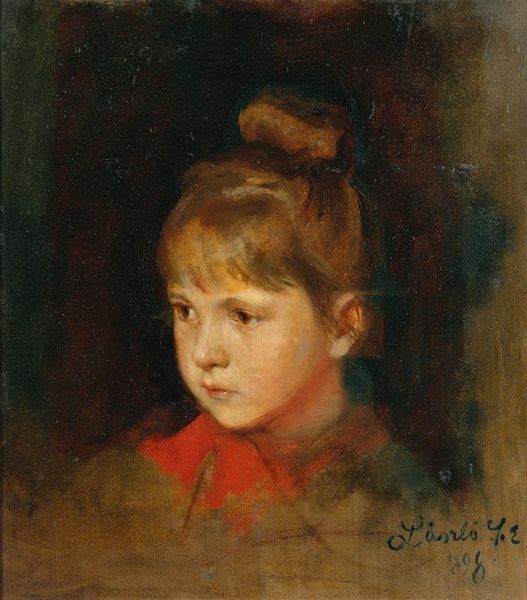
Copyright: Public Domain: Artvee
Editor: Mary Cassatt's "Boy with Golden Curls," made with pastel in 1898, presents this young boy seated in a vibrant, curved red chair, his gaze averted. The textures seem so soft, almost dreamlike. What jumps out to you about the composition of this drawing? Curator: Initially, the interplay of color is compelling: the cool blues of the boy’s attire offset by the warm tones of his hair and the chair. Note how Cassatt uses visible strokes and varied color saturations to build form. Her choice in a relatively restricted range intensifies the composition's structural integrity. Editor: I see what you mean! It seems as though Cassatt isn't trying to portray the boy with photographic realism. Curator: Precisely. Rather, Cassatt exploits pastel's properties to achieve a unique form of structural expressiveness. See, the slightly visible paper underneath— how might this contribute to the artwork's success? Editor: Hmm, it seems that by exposing portions of the paper Cassatt brings attention to the surface of the work itself! So she isn’t interested in the illusion of reality, but the materiality of the drawing… Curator: Yes, the artwork declares its status as a constructed object. Editor: I hadn’t thought of it that way before, viewing art through its compositional elements! Curator: It’s a productive lens. Shifting the focus onto formal elements, it lets us tease out the aesthetic strategies artists use and why, which can transform how we engage with art.
Comments
No comments
Be the first to comment and join the conversation on the ultimate creative platform.
